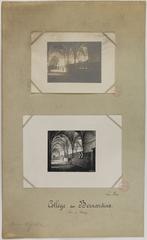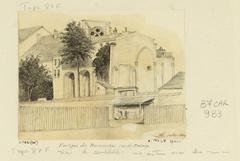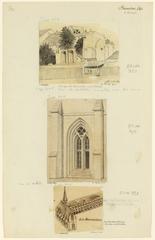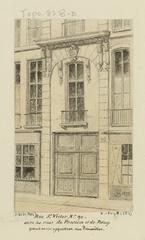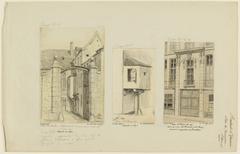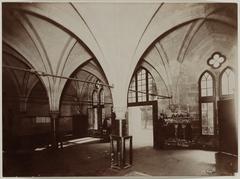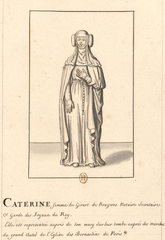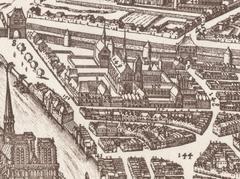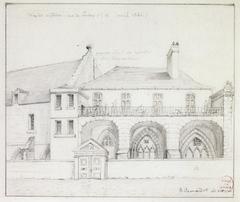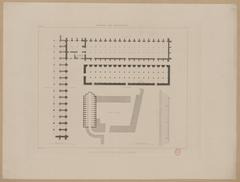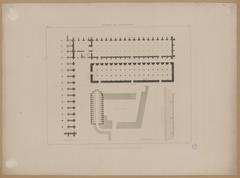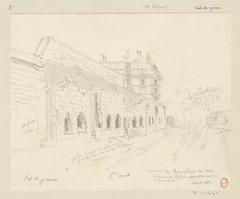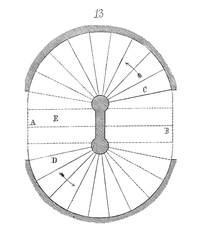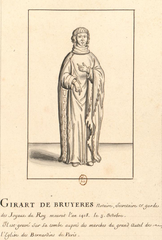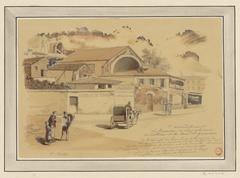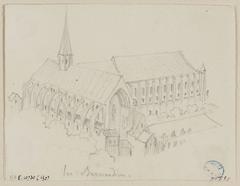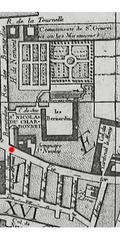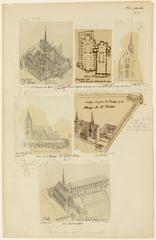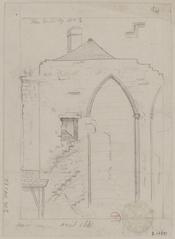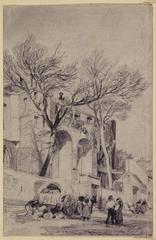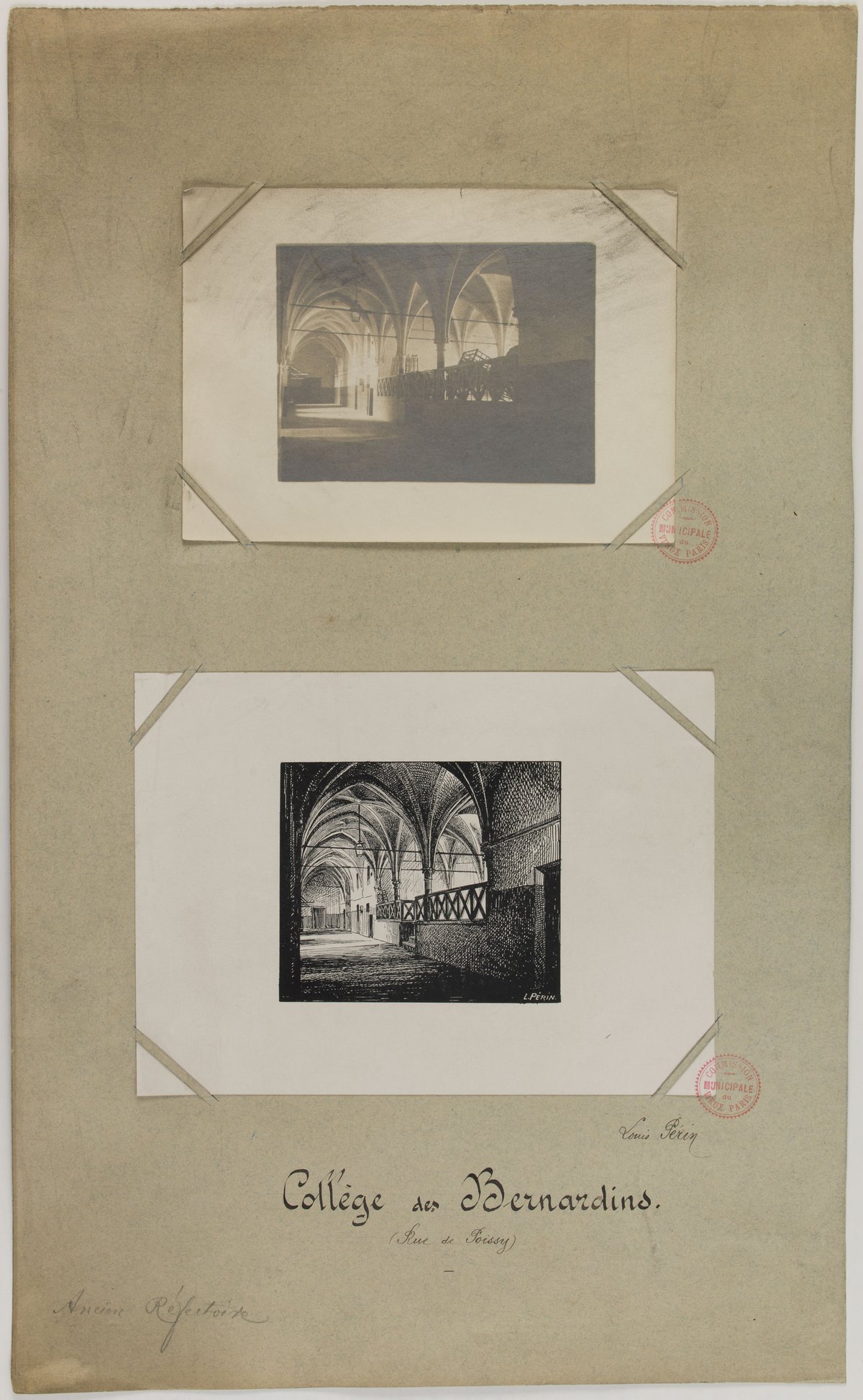
Visiting Collège des Bernardins, Paris: Guide, Tickets, Hours, and Tips
Date: 14/06/2025
Introduction
Located in Paris’s vibrant Latin Quarter, the Collège des Bernardins is a remarkable blend of medieval Cistercian architecture and contemporary cultural vitality. Founded in 1245 as a center for monastic scholarship, it has evolved through centuries of religious, intellectual, and social transformation, now serving as both a historical monument and a hub for artistic and intellectual events (paris-promeneurs.com). Visitors can expect a journey through history, breathtaking Gothic architecture, and a diverse cultural program that bridges the past and present.
Contents
- Foundations and Medieval Origins
- Architectural Evolution
- Intellectual and Religious Significance
- Transformation in the Modern Era
- Restoration and Contemporary Role
- Visiting Hours
- Ticket Prices and Booking
- Guided Tours and Special Events
- Accessibility and Travel Tips
- Nearby Attractions
- Visuals and Media
- FAQs
- Plan Your Visit
Foundations and Medieval Origins
Established in 1245 by the Cistercian order under Etienne de Lexington, the Collège des Bernardins was conceived to educate monks in theology and philosophy. This initiative aligned with the Church’s desire to elevate monastic learning within the urban academic environment of the University of Paris (paris-promeneurs.com). The college quickly became a magnet for scholars from across Europe, with notable alumni including Jacques Fournier—later Pope Benedict XII.
Architectural Evolution
The Collège was constructed according to Cistercian principles: simplicity, harmony, and functional beauty. Its grand refectory, with a 70-meter-long nave and ribbed Gothic arches, remains a standout feature (paris-promeneurs.com, Sortir à Paris). The adjacent flamboyant Gothic sacristy, with intricate stonework, provides a contrasting elegance and now hosts contemporary exhibitions. Over the centuries, the building was modified to fit changing needs, including the addition of a sarrasine-vaulted staircase in the 18th century.
Major restoration efforts in the early 2000s preserved and revitalized these medieval elements, blending them with modern amenities (European Heritage Awards Archive).
Intellectual and Religious Significance
From its inception, the Collège functioned as a crucible for theological debate and intellectual exchange, playing a pivotal role in the rise of the University of Paris and the broader European academic landscape. Cistercian monks educated here disseminated knowledge throughout Europe, shaping both church and secular thought (paris-promeneurs.com).
Transformation in the Modern Era
The French Revolution brought secularization and the repurposing of the Collège des Bernardins. It served variously as a prison, warehouse, fire brigade barracks, and a police academy boarding school. The original chapel was destroyed during 19th-century urban development, yet the main structure endured (paris-promeneurs.com).
Restoration and Contemporary Role
A comprehensive restoration (2004–2008) led by architect Hervé Baptiste, in collaboration with Jean-Michel Wilmotte, returned the Collège to its former grandeur while equipping it for modern use (European Heritage Awards Archive). Today, it houses the Académie catholique de France and serves as a venue for concerts, exhibitions, conferences, and educational programs, exemplifying adaptive reuse of historic architecture (collegedesbernardins.fr).
Visiting Information
Hours
- Monday to Saturday: 10:00 AM – 6:00 PM
- Closed: Sundays and public holidays
- Hours may vary during special events; check the official website for updates.
Tickets and Admission
- General admission: Free
- Guided tours: €8 (reduced rate €4), free for children under 12 (collegedesbernardins.fr)
- Special events/exhibitions: Ticket prices vary; advance booking recommended, especially for popular events like “Le Mystère Mozart” (lemysteremozart.fr)
Booking
- Reserve tickets and tours online or at the venue.
- Group and reduced rates available.
How to Get There
- Address: 20 rue de Poissy, 75005 Paris, France
- Metro: Saint-Michel (Line 4), Cluny-La Sorbonne (Line 10), Jussieu (Line 7), Cardinal Lemoine (Line 10)
- Bus: Lines 21, 27, 38, 85
- Parking: Limited; public transport strongly encouraged
Guided Tours and Special Events
Guided tours in multiple languages provide deep insight into the Collège’s history and architecture. The site hosts a rich array of cultural programming, including immersive experiences like “Le Mystère Mozart,” art exhibitions (notably the 2025 “Aubusson tisse Tolkien” tapestries), concerts, and thematic festivals (Sortir à Paris, Collège des Bernardins – Tolkien Exhibition).
Accessibility and Visitor Services
- Wheelchair accessible: Step-free access throughout main areas, elevators, and accessible restrooms (Collège des Bernardins FAQ)
- Assistance: Available upon request; free admission for accompanying persons with disabilities
- On-site amenities: Modern restrooms, cloakroom, Wi-Fi, bookshop, and the restaurant La Table des Bernardins
Dining
La Table des Bernardins offers a menu of French cuisine in the atmospheric nave, open Monday to Friday, 10:00 AM – 6:00 PM. Garden seating available in summer (Sortir à Paris – La Table des Bernardins).
Nearby Attractions
- Notre-Dame Cathedral
- Sorbonne University
- Luxembourg Gardens
- Panthéon
- Jardin des Plantes
- Latin Quarter cafés and bookstores
Visuals and Media
Visitors and remote explorers alike can enjoy high-quality images, virtual tours, and interactive maps via the official website. These resources showcase the Collège’s soaring Gothic nave, sacristy, and recent restoration work.
Frequently Asked Questions (FAQ)
Q: What are the Collège des Bernardins’ opening hours?
A: Monday to Saturday, 10:00 AM – 6:00 PM; closed Sundays and holidays.
Q: Is admission free?
A: General entry is free. Guided tours and special events may require tickets.
Q: How do I book tickets?
A: Online via the official website or at the venue.
Q: Is the site accessible for visitors with reduced mobility?
A: Yes, with step-free access and assistance available.
Q: Are there dining options on site?
A: Yes, La Table des Bernardins restaurant is located in the historic nave.
Q: Can I take photographs?
A: Non-flash photography is allowed in public spaces; restrictions may apply during performances.
Q: What public transport should I use?
A: Metro stations Saint-Michel and Cluny-La Sorbonne are closest; several bus lines also serve the area.
Plan Your Visit
- Reserve tickets in advance for guided tours and headline events (Le Mystère Mozart).
- Wear comfortable shoes for walking on uneven medieval flooring.
- Use public transport for convenience.
- Check the event calendar for current exhibitions and performances.
- Download the Audiala app for audio guides and up-to-date information about Paris historical sites.
Summary and Recommendations
The Collège des Bernardins encapsulates Paris’s medieval heritage and ongoing cultural dynamism. Its architectural grandeur, rich programming, and welcoming amenities make it a must-visit for anyone interested in history, art, or intellectual exploration. Book your tickets early for special events, explore its unique spaces, dine at the on-site restaurant, and combine your visit with other nearby Parisian landmarks for a truly enriching experience (collegedesbernardins.fr, sortiraparis.com).
Sources
- paris-promeneurs.com
- collegedesbernardins.fr
- Sortir à Paris – Collège des Bernardins
- European Heritage Awards Archive
- Collège des Bernardins – Guided Tours
- Sortir à Paris – La Table des Bernardins
- Collège des Bernardins FAQ
- Le Mystère Mozart
- Collège des Bernardins – Tolkien Exhibition
- JRRVF – Tolkien at the Collège des Bernardins
- Office et Culture – Le Mystère Mozart Experience
